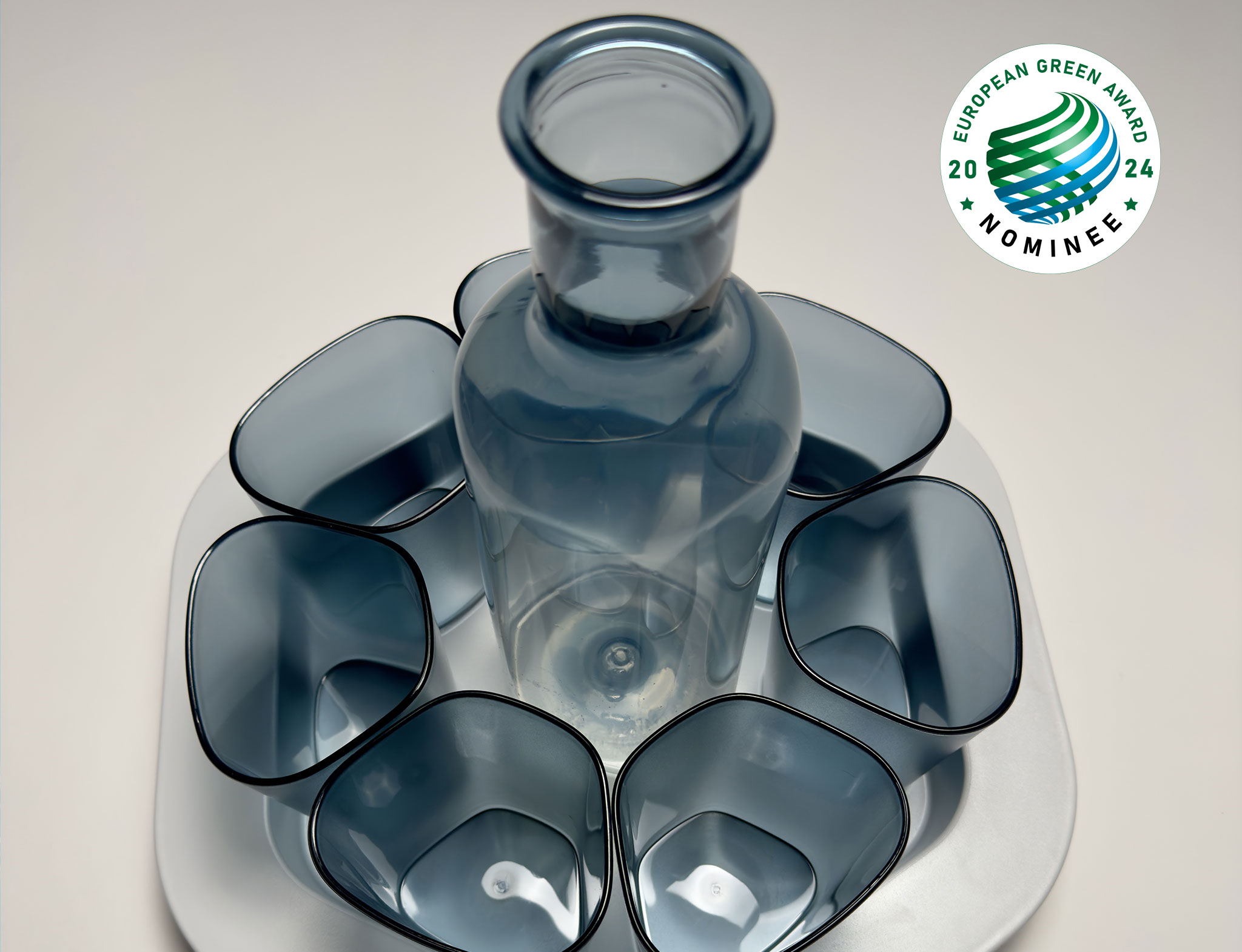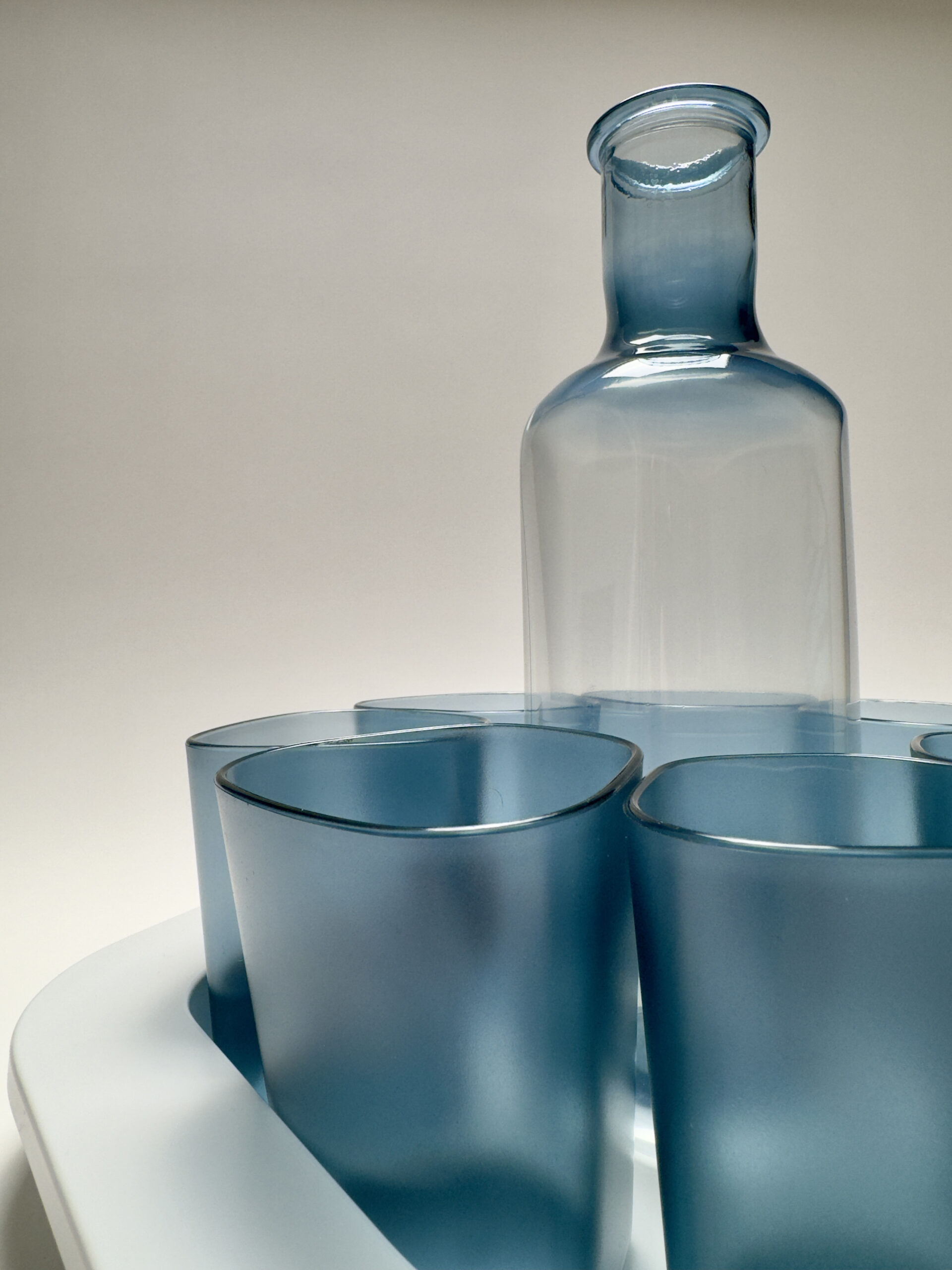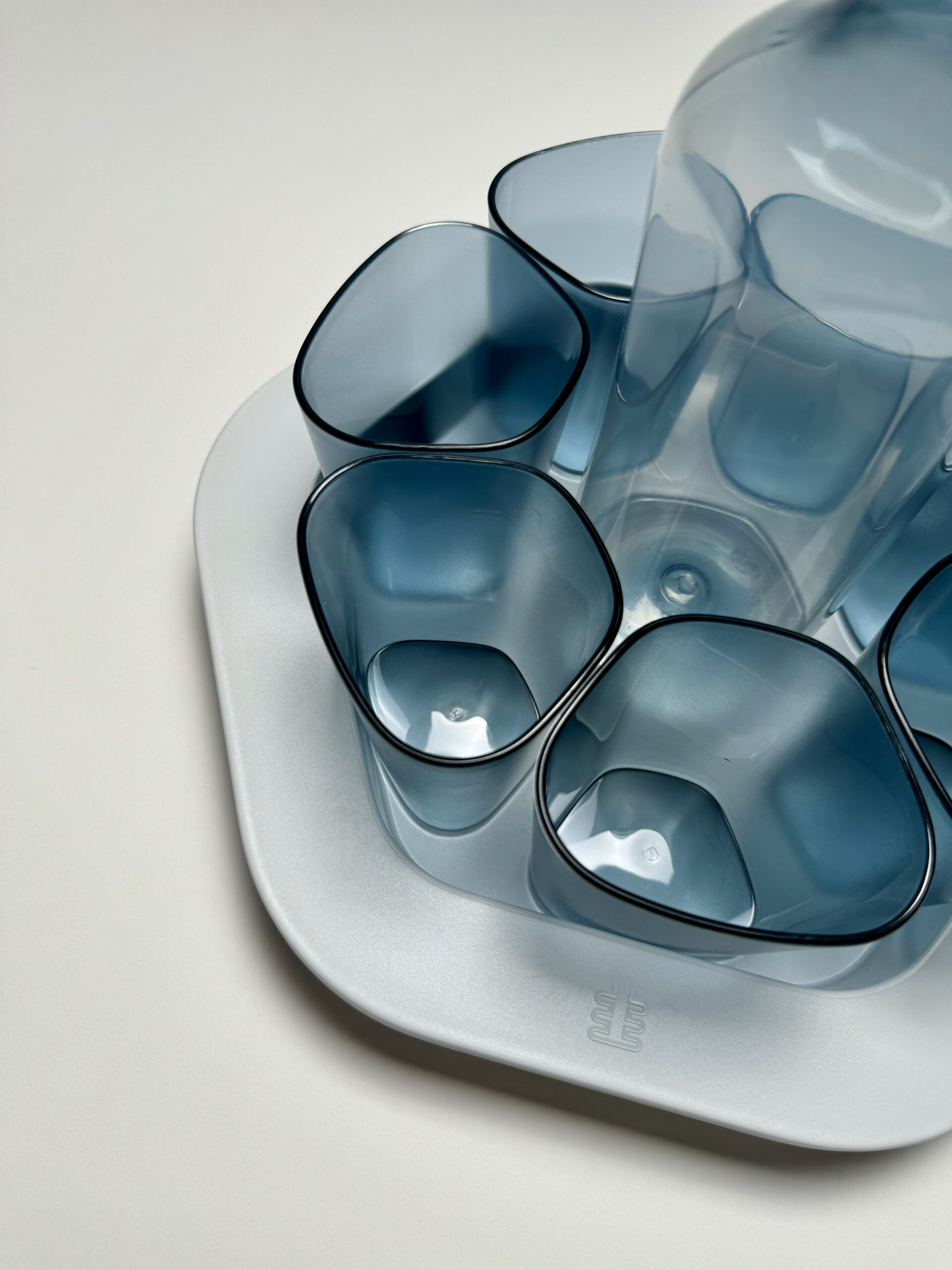SETE
A new shape for water… using the same material
SETE (that in italian means THIRST) is a drinking kit entirely made using recycled PET coming from water bottles; we give a new shape to water, using the same material!
Gallery
General Description
Every year more than 10 billion plastic water bottles are put on the market in Italy… all of them are made of PET. Only the 40% of those are recycled (from Greenpeace “The unbearable weight of plastic bottles”).
SETE is a drinking kit entirely made using this recycled PET (SETE in Italian means THIRST).
We decided to do something with these bottles in order to get them out of the way; we did’n just want to have a product to sell… we wanted to give a message.
We had this clear idea, We had a patented process and the knowledge needed for work with recycled plastics… and now?
We asked one of the most important italian designer, Giulio Iacchetti (2 Compasso d’Oro won), to join the project.
The most important concept he conveyed to us was that the customer shouldn’t buy green products because they are made of recycled plastic, for a moral choice… the market should consume them because the articles are beautiful, functional, satisfying and so on.
Sustainability Impact
SETE is a living recycling manual, infact:
- SETE’s tray is made using PET coming from the MECHANIC RECYCLE of these water bottles. The mechanic recycling process is that system by which those bottles are collected and shredded; the fragments obtained are washed and treated to become reusable. It is the plastic recycling process in use in our days.
- SETE glasses and jug are instead made using PET coming from the CHEMICAL RECYCLING of plastic bottles. The idea behind this recycling system is: if all plastics derive from oil, why don’t we do the reverse path starting from the various plastics to get as close as possible to oil? Chemical recycling is the future but, to date, the process is still in the development phase… with some rare cases of success like the one used for SETE.
- Finally, production was carried out following a moulding method patented at European level (EP3747316 “injection process for the production of PET and rPET articles”). Thanks to it, it is not just possible to overcome the technical limitations of the rPET moulding, but the use of rPET for injection moulding production becomes economically sustainable.
Head of Project
–
Website



